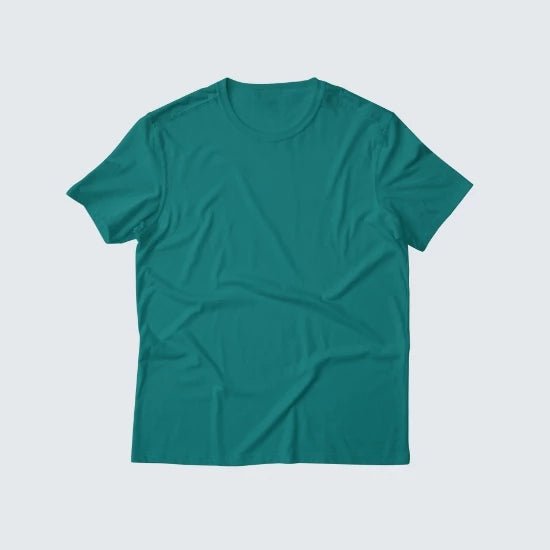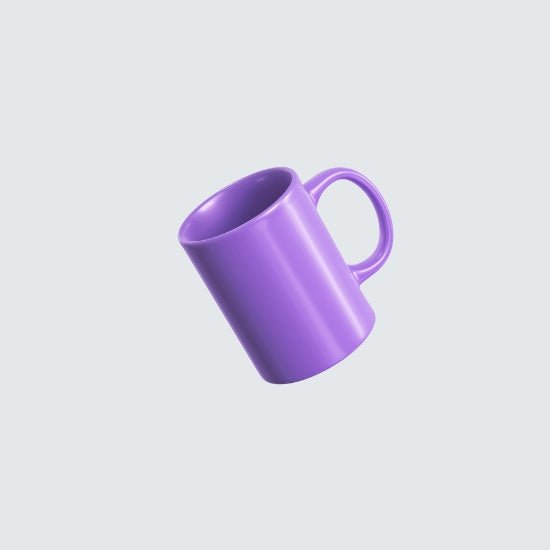3D printing is a technology for printing solid objects and ready-to-use parts. This type of printing relies primarily on stacking and combining layers of specialized materials to form the desired object. The printing process is fast, with low fixed costs, and allows for the creation of more complex geometric shapes compared to traditional manufacturing methods, utilizing a wide variety of materials. 3D printing is widely used in the engineering industry, particularly for producing lightweight prototypes.

3D Printing: Your Comprehensive Guide to Starting a Printing Business in 2024
Share
What is 3D printing?
3D printing and additive manufacturing (AM)
The term "3D printing" is often associated with hobbyists, as the printing technology is easy and accessible to everyone. In this article, we'll explore some 3D printing technologies, such as FDM, and low-cost materials like ABS and PLA (we'll explain all of these acronyms below). The widespread popularity of 3D printing is largely due to the availability of affordable, desktop-compatible printers. RepRap is an early promoter of 3D printing, producing the first two machines in 2009: the MakerBot and the Ultimaker.

In contrast, modular manufacturing (AM) is almost always associated with commercial and industrial applications.

3D printing and rapid prototyping
"Rapid prototyping" is another term sometimes used to refer to 3D printing. This term dates back to the early history of 3D printing when the technology first emerged. Specifically, in the 1980s, when 3D printing was first invented, it was called "rapid prototyping technology" because at that time, the technology was only used for prototype manufacturing, not actual production.
In recent years, 3D printing has evolved into a viable alternative for producing many parts across all industries. Therefore, while some still use the term "rapid prototyping" to refer to 3D printing, the technology has evolved significantly to encompass a wide range of fields and applications.
When was 3D printing invented?
3D printing began as an idea to speed up the development of industrial products by producing prototypes more quickly. The invention of the first 3D printer is credited to Chuck Hull, who invented the stereolithography (SLA) printer, patented in 1984.
Foundation stage
Despite Chuck's fame, the development of this technology was not limited to one man. Rather, it occurred simultaneously in the late 1980s, with many companies founded during this period that were intent on developing the technology.
- 1981 - The first patent for a device using ultraviolet light to cure photopolymers was granted to Hideo Kodama in Japan. The concept was designed for "rapid prototyping," but the patent was abandoned due to a lack of interested developers.
- 1984 - Three French inventors filed a patent for a UV light-based device, similar to Hideo's, for curing photopolymers. General Electric declined to manufacture the device due to the lack of commercial demand for the technology at the time.
- 1984 - In the same year, American Charles "Chuck" Hull filed a patent for a device for printing three-dimensional objects using stereolithography, known as SLA.
- 1987 - Hal invented a new format for printing files known as STL, and in the same year founded 3D Systems .
- 1987 - American Carl Deckard filed a patent for selective laser ligation (SLS) technology, and in the same year co-founded Desktop Manufacturing (DTM) (acquired by 3D Systems in 2001).
- 1989 - American Scott Crump filed a patent for fluid dynamic die forming (FDM) technology, and in the same year founded Stratasys with his wife.
Marketing stage
From the late 1980s to the early 1990s, this industry saw a significant boom in commercialization. Initially, the machines available on the market were large and expensive, and were sold to companies to assist them in producing prototypes, such as automobile companies, aerospace companies, and plastic box manufacturers. Here are some of the first printers invented and commercialized:
- 1987 - 3D Systems released the first commercial SLA-1 printer.
- 1992 - The FDM patent was finally granted to Stratasys, leading to the creation of the company's first 3D printer, the FDM Modeler.
- 1992 - DTM produced the first commercial SLS printer, the Sinterstation 2000.
- 1994 - German company Electro Optical Systems (EOS) unveiled the world's first metal 3D printer, the EOSINT M160.
Democratic transformation
After the period of competition between companies over patents and advances in materials science, these successive events created an environment in which 3D printing became accessible to the masses. During this period, in 2005, the idea of 3D printing began to reach the public through the following events:
- 2005 - The first open-source project, RepRap, was launched with the goal of creating the first 3D printers capable of replicating themselves by printing their own parts.
- 2009 - All FDM patents become public domain and MakerBot launches its desktop 3D printer, the "Cupcake CNC."
- 2012 - Formlabs launched the first affordable SLA printer, the Form 1, through a Kickstarter campaign that raised $2.95 million in funding!
- 2013 - Protolabs was launched, the first project to offer 3D printing services to anyone looking to purchase prints, as well as supplying raw materials to those who own machines. The company has been a huge success, opening more than 50,000 printing centers worldwide to reach the largest possible number of beneficiaries worldwide.
- 2014 - SLS patents became public domain, leading to more companies releasing smaller, more affordable SLS printers.
How does 3D printing work?
Modular manufacturing and traditional manufacturing
Modular manufacturing (a 3D printing technology) is a term that has only been around since the 1980s, so 3D modeling methods developed before that are often referred to as traditional manufacturing. To clarify the key differences between modular and traditional manufacturing, we will categorize all methods into three groups: modular, subtractive, and deformative.
Modular manufacturing
Modular manufacturing is the process of building three-dimensional objects by stacking and combining two-dimensional layers of materials.

This method doesn't require long startup times or high startup costs, making it ideal for prototyping. Any object can be produced in any desired geometric shape, which is the most important and valuable feature of 3D printing.
One of the biggest drawbacks of 3D printing using additive manufacturing technology is that the density and stiffness of the printed objects vary to varying degrees, which places limitations on producing objects with a consistent character.
Subtractive manufacturing
Subtractive manufacturing is a method of carving and removing material from a given mass to form the desired three-dimensional object.

This technique is characterized by high precision, as virtually any object can be formed, due to the high degree of control over all aspects of the process. Computer-aided design (CAM) software must be used to draw and design the path required to efficiently remove material and produce the desired shape. This step requires some time and effort to prepare, but otherwise, this method is the most cost-effective.
The only drawback of this technique is that the cutting tool has to reach all surfaces to remove material, making it unsuitable for more complex designs. Subtractive manufacturing is also one of the most wasteful processes, as a large amount of material must be removed to produce a simple object.
plastic manufacturing
The molding technique relies primarily on the use of molds, then injecting the finished mold with the necessary materials for 3D printing. Finally, we heat-stamp or press-stamp the object to produce the desired shape.

This type was specifically developed for creating production lines for specific parts, where the initial costs of creating molds for the production process are extremely high, but the costs of producing parts later are very low. This technology can produce large quantities repeatedly and consistently, making it the most cost-effective.
Comparison between the three (3) methods:
Manufacturing is complex, and there are many aspects to compare to determine the best method among the three, but to make things easier, we have listed the most appropriate cases for each method below:
- Additive manufacturing is suitable for producing low quantities with complex designs, at high speed.
- Subtractive manufacturing is best for medium quantities and simple designs.
- Modular manufacturing is best for producing large quantities with high consistency across all products.
Total cost is usually the factor that determines which manufacturing process is best. As a rough example, unit costs for each method can be visualized as follows:

3D printing technology
With 3D printing becoming so widespread in the market, it can be difficult to understand all the terms and technologies used in this field. That's why we'll explore all aspects of this technology in this article.
Different types of 3D printing
All types of 3D printers can be classified into the following operations:
- Photopolymerization: Materials are processed using a photopolymer.
- Material jetting: Molten thermal material is deposited through a hot nozzle.
- Grinding Materials: Grinding material particles are combined using a high-energy source.
- Material injection: Droplets of photosensitive liquid melting material are injected in layers and cured by light.
- Coil jetting: Droplets of liquefied material are jetted onto a granular bed, which is then sintered together.
- Direct energy jetting: Molten metal is jetted and fused at the same time.
- Sheet cutting: Individual sheets of material are cut to shape.
3D printing processes
There are seven main 3D printing processes. Each has its own technology, and each has its own companies that manufacture different printers.
1. Photopolymerization
Photopolymerization is the process of exposing a special liquid material (resin) to a photopolymer with specific wavelengths of light to change it from a liquid to a solid state.
Positives
- smooth and soft surface
- Minute details
- Good for prototyping
Negatives
- crisp
- Usually needs support bases.
- UV sensitive
- It requires long operations.
2. Combine the ground materials.
In this technique, we use a heat source to induce the fusion or melting of the plastic or metal powder particles together into one layer at a time.
Positives
- Strong parts (nylon)
- intricate designs
- Scalable (depending on size)
- No supports needed
Negatives
- longer production time
- High cost (machinery, materials, and operation)
3. Blowing materials
Material jetting technology works simply by compressing the material and spraying it through a nozzle onto the build plate, layer by layer, to form the desired object. This class of 3D printing is the most widely used.
Positives
- Fast production time
- low cost
- Easy access to materials
Negatives
- The surface is rough
- The printed pieces have a slight difference.
- Requires supports
- Limited accuracy
4. Pumping materials
This technique relies on injecting polymers or waxes and strengthening them with UV light or heat to build up parts one layer at a time until the desired design is formed.
Positives
- More realistic models
- Excellent details
- High accuracy
- glaze
Negatives
- high cost
- fragile
5. Blowing materials in files
A print head is used to jet an adhesive onto thin layers of milled material to bond the materials together.
Positives
- Multiple color options
- wide range of materials
- No supports needed
Negatives
- low power
- Less accurate than material jetting
6. Direct energy jet
The direct energy jet creates three-dimensional objects by melting the ground material as it is jetted.
Positives
- strong parts
- wide range of materials
- larger sizes
Negatives
- high cost
- surface roughness
7. Cutting sheets
This technique involves stacking thin sheets of material on top of each other to create shapes.
Positives
- Fast production
- low cost
- No supports needed
- multi-material layers
Negatives
- Needs post-printing processing
- Limited materials
All 3D printing technologies can be summarized in the following diagram:

How to choose the printing process that is right for you
Determining the optimal 3D printing process for an eye product can be difficult because there are more than one suitable process. There are three main aspects to consider when choosing:
- Required material properties: strength, hardness, etc.
- Functional and visual design requirements: such as surface texture, heat resistance.
- 3D printing process capabilities: resolution, object size, etc.
In short, to choose the right process, the following points must be taken into account:
- Required materials
- Desired job or visual appearance
- Required accuracy or build size
3D printing software
Before you begin the 3D printing process, you must have a dedicated printing software. There are many different programs available to assist in both stages: design and printing, from designing the 3D object to simulating the printing and shaping process.
What software should you use for 3D printing?
The two main methods of 3D design are "solid design" and "surface design," and there are specialized CAD software packages for each method. Solid design creates virtual objects by selecting pre-defined 3D shapes in the software and connecting them to form a new shape. The only difference with surface design is that the designer starts with 2D shapes to design the 3D object.
Both methods can achieve stunning results, but solid design is more efficient and faster for creating unnatural shapes, while surface design is faster for simple, natural forms. These programs are among the most popular with professionals:
- SolidWorks
- Fusion 360
- Rhino 3D
Most 3D printing software includes print simulation and file debugging tools.
How to get a 3D printed product
3D printing has come a long way since its inception, and it is now very easy to get 3D printed objects quickly and inexpensively.
Buy a printer or use an online 3D printing service?
Should you buy your own 3D printer or use an online printing service? It's an important decision to make, so we've compiled the reasons for both to help you make the right decision.
| Buy a printer | Use of online services |
|---|---|
| Need to print (10-25 products per week) | You need a small number (less than 10) or large numbers (25+) of printed products per week. |
| You have one product and one type. | Want to print multiple products and materials? |
| You are ready to make the investment by purchasing your own equipment. | Want access to the latest technology at all times? |
| You are ready to prepare and optimize your print. | Prefer to focus your time on designing and improving forms. |
| You have the space and time to get your printer up and running. | You want to test and learn first before you decide which printer to buy. |




